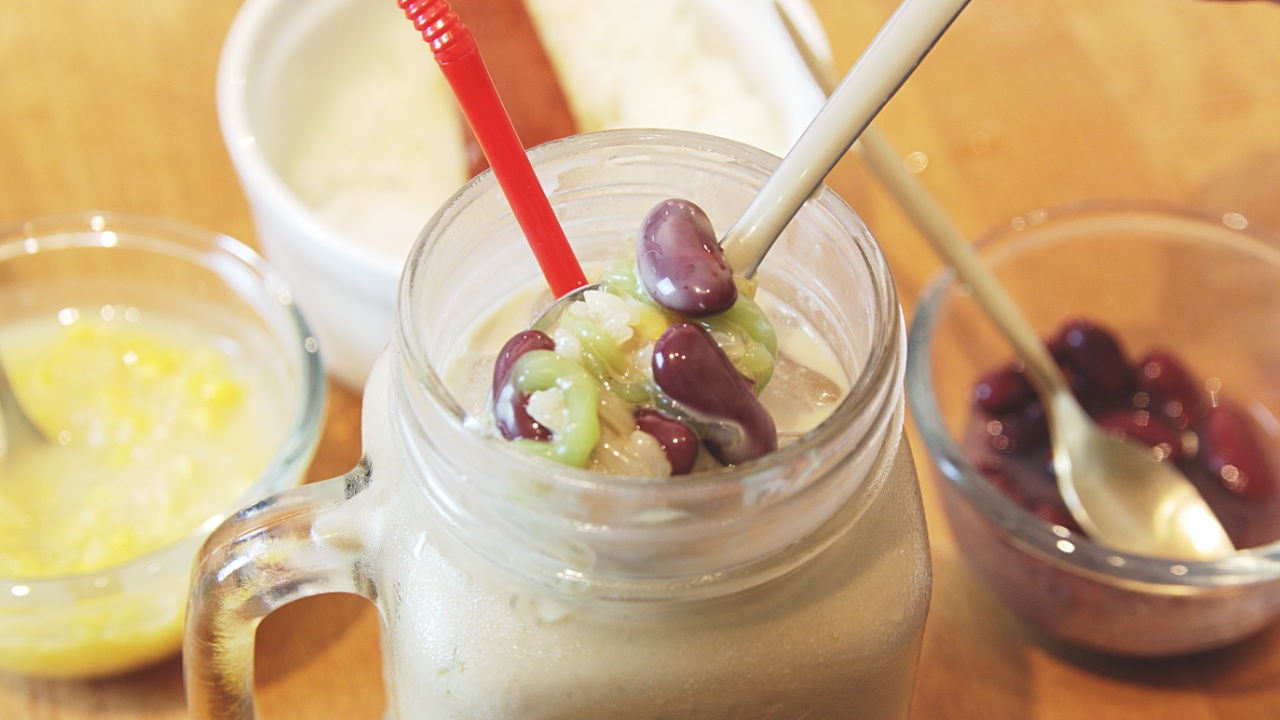Cendol refers to a cold coconut milk dessert that is extremely popular among locals in Southeast Asian countries especially Indonesia, Malaysia and Singapore. The signature green strands in the dessert are made of rice flour and have the texture of soft jelly. The dessert is topped with a local sweetener known as palm sugar. These make up the ingredients of a basic glass/bowl of the delicious cendol.
It is usually sold by vendors by the roadside under a big bushy tree. You'll either spot their stalls set up in their vans or at the back of their motorcycles. I enjoyed sitting on the colourful plastic chairs surrounding the mobile cendol vendors enjoying the cold dessert on a warm day. There is always the option to go for seconds especially when the heat is scorching as cendol makes the heat bearable. Thanks to the tropical weather in Southeast Asia, it is also available in hawker centers and food courts.
Other ingredients in cendol
The combination of palm sugar along with coconut milk blends perfectly. These days, the addition of cream corn and kidney beans adds some texture to this amazing dessert. In this recipe, glutinous rice is also added to further enhance the taste. You may omit the accompaniments if you love it authentic and simple.
Tools to make cendol strands
In Southeast Asia, there are special tools or machines used to create the pandan flavoured cendol strands. As home cooks, the tools in our kitchen are limited. However, these are some tools you can use in replacement. A potato ricer works great as a cendol press. Choose the right size of opening so the strands will not be too thin or thick.
Another tool which can be used is a perforated plate or tray which is usually used for steaming. Simply place the cooked pandan batter on the plate and press it through the holes using a spatula. That would do the trick.
However, the easiest method would be using a plastic bag as shown in the video. Push the batter towards one side of the bag. Then, cut off the tip of the bag and press the batter through it.
Whichever tool you decide to use, remember to catch the pressed pandan strands in a bowl of cold water with ice cubes. This helps to set the form of the pandan strands.
Why are the cendol strands so hard?
There may be two causes for this. During the cooking process (step 3) to thicken the pandan mixture, it might have been overcooked causing too much liquid to evaporate resulting in the texture being hard and breaks easily.
The other reason is the temperature of the cold water used to soak the pandan strands. Leaving them in the cold water with too many ice cubes for too long may cause them to harden more than necessary. Therefore, once the form of the strands are set, transfer them to room temperature water. Refrigerating them in water would not be an issue.
Substitute for pandan leaves
Fresh pandan leaves are used for its aroma and colour. It can be substituted by frozen pandan leaves or pandan extract that are usually available in Asian grocers. Read more about where to buy and how to choose pandan leaves here.
Lighter version of cendol
For a lighter version, the thickness of the coconut milk may be diluted with water according to your preference.

